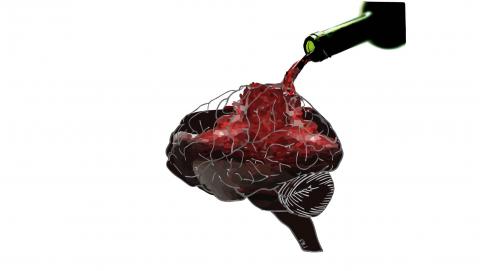
The study, which was published on June 4 in the journal eLife, defines the circuits within the brain of a fruit fly that are important for the acquisition, consolidation and expression of alcohol reward memories.
The researchers found that neural circuits required for alcohol reward memories shift from population level dopaminergic activation to select dopamine neurons that guide behavioral choice in fruit flies. This means that there is a shift from a broad activation to a select group of neurons associated with individual memories.
“We’ve defined the neural circuits that are important for the acquisition, consolidation and expression of alcohol-associated preference with single-cell resolution," said Kristin Scaplen, the study’s first author and a postdoctoral research associate in Brown's Kaun Lab. "We identified two separate convergent regions that we think are important for updating information processing and memory.”
Sensory cues such as the scents and smells developed during wine aging, the cool feel of a glass, or the dim lighting of a room become associated with the feeling of intoxication. They can, therefore, elicit alcohol cravings, according to Karla Kaun, one of the researchers behind the study.
“It’s critical to understand how brain circuits function while we make and remember these sensory memories, so that we can understand how to lessen these cravings,” said Kaun, Robert and Nancy Carney Assistant Professor of Neuroscience. “Remarkably, flies are also capable of forming these types of associations. We use flies because the neurogenetic tools allow us to map these circuits almost one cell at a time.”
The study provides a circuit framework through which dopamine neuronal activation shifts from reward delivery to cue onset. Dopamine is commonly referred to as the reward neurotransmitter. However, this study provides insight into the maladaptive nature of memory.
As a next step, the researchers said they plan to use this framework to predict how neural circuits may act during a similar memory formation in more complex brains, such as the human brain.
“Now that we have identified alcohol associated circuits that span across brain regions, we can begin to investigate how circuitry dynamics are disrupted with experience, which will provide valuable insight to the causal underpinnings of maladaptive memory and its persistence,” Scaplen said. “The goal is to use this circuit as a framework and pull out general circuitry principles for how memories for intoxication act in more complex brains.”